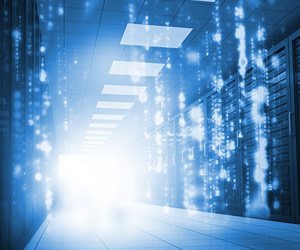It is no longer adequate for businesses to deploy IT systems based on the highest return on investment or efficiency gains. IT infrastructures must now run with the smallest possible carbon footprint and the minimum environmental impact, to not only drive sustainability goals set out by enterprises but also meet consumer and government mandates for sustainable innovation.
Most major markets across the Asia Pacific region have established net zero targets and laid out various initiatives to move toward those goals.
Singapore, for instance, has pledged to be more selective of the data centers it allows to be built on local shores. Its Green Plan 2030 paves a 10-year journey comprising several targets that can help achieve its goal of net zero emissions, including plans for solar energy to power 350,000 households a year.
Meanwhile, Japan’s Green Growth Strategy outlines a path toward carbon neutrality with plans to push green growth across 14 sectors in the country, including renewable energy sources and technologies such as carbon recycling. India’s sustainability aspirations include cutting the emissions intensity of its GDP by 45% and achieving 50% cumulative electric power capacity from non-fossil fuel-based energy resources by 2030.
“The region’s increasing focus on sustainable operations and products has underscored the need for companies to reduce their carbon footprint, even as they adopt transformative technologies that require more IT resources,” says Andrew Underwood, field chief technology officer at Dell Technologies in Asia Pacific and Japan. “Machine learning and automation tools, for instance, require intense compute power. The shift toward cloud technologies and increased consumption of digital services have also pushed the need for more data centers.”
5 Reasons to Level Up with PowerEdge and 4th Generation AMD EPYC™ Processors Infographic
Discover the advantages that Dell Technologies and AMD can bring to your infrastructure. Access this resource now and learn five reasons to level up with Dell PowerEdge servers powered by 4th generation AMD EPYC™ processors.
Download NowWith demand for cloud and online services expected to continue growing, sustainability efforts should focus on reducing energy usage in data centers and deploying IT systems that devour less resources while maintaining high performance.
Powering ahead with energy efficiency, ‘cooler’ features
“Cooling technologies and energy, in particular, have taken center stage in the journey toward more sustainable data centers. The less heat servers generate, the less power is required to cool down the equipment,” Underwood notes. “For instance, server designs that have improved airflow and lower fan speed can reduce the amount of energy the system consumes. Using components that generate more compute power per watt, with minimum impact on performance, also boosts the energy efficiency of servers.”
Dell’s latest generation of PowerEdge servers is built with the Dell Smart Cooling suite, which increases airflow and reduces fan power by up to 52% compared with previous generations.1 The Smart Flow feature delivers performance with less power needed to cool the server.
In addition, Dell PowerEdge servers feature a T-shaped motherboard that supports thrust vectoring, which reduces the number of fan RPMs needed and consumes less energy. A hex chassis design further enhances airflow. Keeping servers cool while they run at higher levels, for longer periods of time, delivers greater core density and allows for more efficient data centers.
PowerEdge servers have cut their energy intensity by 83% over the past nine years.2 Customers also can monitor carbon emissions and better manage their sustainability targets with Dell OpenManage Enterprise Power Manager 3.0 software. Power caps can be set at up to 82% faster to limit overall energy usage, and users can establish their total server use as well as virtual machine and facility energy consumption.
To further reduce their carbon footprint, PowerEdge servers use up to 35% recycled plastic3 and are designed so components can be repaired, replaced or easily recycled.
By choosing systems such as Dell servers, which are built with sustainability in mind, businesses and data center operators will be better equipped to achieve their own sustainability goals. This will be pertinent, especially as more than 1,000 organizations in Asia Pacific have made various commitments to reduce their carbon emissions via the Science Based Targets initiative (SBTi), which provides a framework aligned with Paris Agreement objectives to maintain global warming below 1.5° C.
These businesses are among a growing community that has realized the importance of adopting sustainable innovation. Are you on the same path?
1 “Next-Generation Dell PowerEdge Servers Deliver Advanced Performance and Energy Efficient Design | Dell Technologies Singapore,” Dell Technologies, Jan. 17, 2023
2 “Improved Energy Efficiency,” Dell Technologies, 2022
3 “Sustainability on Dell EMC PowerEdge,” Dell Technologies, 2021

